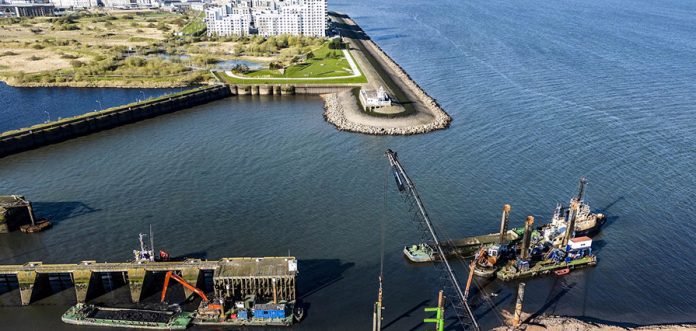Earlier this year, Inverness and Cromarty Firth Green Freeport and Forth Green Freeport were successful in their bids to become Scotland’s first green freeports. While work is underway on each freeport’s business case, the private and public sectors should consider the opportunities that lie ahead for them.
What is a green freeport?
There is no universal description, however The Scottish Government defines a green freeport as:
“…a large, zoned area within a defined boundary which includes a rail, sea or airport. Operators and businesses in the zone can benefit from a package of tax and other incentives through a combination of devolved and reserved levers.”
The differentiating factor for a Scottish green freeport is its focus on contributing to the Scottish Government’s Net Zero agenda. Applicant criteria states that a green freeport must:
- contribute to a just transition to net-zero emissions by 2045, delivering net-zero benefits and creating new green jobs; and
- demonstrate how they would support high-quality employment opportunities that offer good salaries and conditions, and how fair work would be embedded in the green freeport area.
While the business cases are being developed, it is unclear if each freeport’s application has satisfied the net zero commitments specified above or whether certain ‘green criteria’ may need to be met by businesses to obtain some of the proposed green freeport reliefs and incentives.
What are the benefits of green freeport status?
There are several:
Seed funding
Each green freeport can access up to £25 million of seed capital funding once their business cases are approved. Government guidance states that this seed funding will principally apply to:
- Site assembly and remediation works; and
- Transport infrastructure connecting sites within the green freeport to each other, immediate surroundings, other assets within the freeport’s outer boundary, or to the wider ‘travel to work’ area.
Tax incentives
Within each green freeport there will be three ‘tax sites’ – designated areas that are undeveloped or underdeveloped. Forth Green Freeport’s proposed tax sites are at Grangemouth, Rosyth and Leith, while Inverness and Cromarty Firth Green Freeport’s proposed tax sites are at Invergordon, Nigg and Pitcalzean and Inverness (precise details to be agreed).
To incentivise development, various tax reliefs will be available:-
- Land and Buildings Transactions Tax (LBTT) relief on the purchase or lease of qualifying non-residential property
- 100% capital allowances on new plant and machinery
- enhanced structures and buildings allowances; and
- relief from employer Class I National Insurance Contributions (NICs) for new employees.
The Scottish Government is introducing an LBTT relief that will be similar to the SDLT freeports relief, while enhanced capital allowances and the NICs reliefs are existing UK Government freeport reliefs. Tax reliefs only apply within the tax sites, not the wider green freeport zones.
Non-domestic rates (NDR) relief
NDR relief will be available for businesses occupying property in the Scottish green freeport tax sites.
That relief may only be available for those that meet certain ‘green’ criteria, but details are unlikely to be confirmed until the business cases have been approved.
Customs benefits
Burntisland and Edinburgh Airport are the proposed customs sites for Forth Green Freeport, while Invergordon Service Base, Admiralty Pier, Nigg Energy Park and Port of Inverness are the proposed sites for Inverness and Cromarty Firth Green Freeport.
The customs sites are designated as being outside the UK for customs duty and VAT purposes. The main customs benefits include:-
- duty suspension – customs duties will only be payable where goods leave the customs site for free circulation
- duty flexibility (calculating import duties based on value);
- duty exemption for re-exports
as well as a range of non-tariff benefits; e.g. simplified import declarations.
For local authorities: NDR retention
Government indications are that the relevant councils will be allowed to keep the non-domestic rates growth on green freeport tax sites above an agreed baseline, rather than those rates being redistributed centrally. While accountability for the appropriate disbursement of the retained NDRs, as public funds, will lie with the relevant council, the green freeport governing bodies will set the strategic direction for the application of those funds.
What’s next?
A business case from each green freeport has to be submitted to the Scottish and UK Governments, outlining their strategic visions. The current submission deadline is 31 October 2023, after which approval of the business cases and designation of the tax sites will take place. Spring 2024 is reportedly when the green freeports will become operational.






